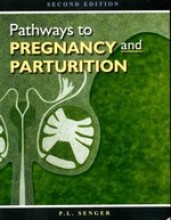Sex Differences in Behavior: Sex Determination and Differentiation - Mammalian Sexual Differentiation
9 important questions on Sex Differences in Behavior: Sex Determination and Differentiation - Mammalian Sexual Differentiation
What is the Turner sydrome?
Problem with the second X chromosome, the gonads never develop completely and individuals need to be treated with sex steroid hormones to induce puberty.
What is gene imprinting?
The process of inactivating either the maternal or the paternal genes.
What is the most common reason for anomalous sexual differentiation in human females?
Prenatal exposure to androgens, from either exogenous ( exposure to DES or MPA) or endogenous (exposure to congenital adrenal hyperplasia (CAH)) sources
- Higher grades + faster learning
- Never study anything twice
- 100% sure, 100% understanding
What happens with exogenous exposure?
During pregnancy, exposure to MPA and DES enhances the likelihood of causing masculinization of reproductive function and subsequent behaviour in the exposed children.
What is the Turner syndroom?
lack of or damaged second X (or Y) chromosoom -> sexed as girl at birth, rarely development of gonads but clearly recognized as ovaries. Fail to produce steroid hormones -> induce puberty. Slow growth
Explain CAH (congenital adrenal hyperplasia).
fetal adrenal glands produce high concentrations of androgens by default in the feedback system in the brain from cortisol on ACTH. Results in moderate to severe masculinization of the genitalia in afflicted females.
How is endogenous exposure to androgens dangerous?
CAH (cognital adrenal hyperplasia) causes the adrenal glands to produce high concentrations of androgens instead of cortisol, the high levels are only of effect in females, causing masculinization of the genitalia in afflicted females.
What is/happens with males with DSD?
XY humans are afflicted with (C/P)AIS (complete/partial androgen insensitivty syndrome), rodents have testicular feminization mutation (TFM). Males are either insensitive to androgen receptors or lack them. XY CAIS have external female genitalia and testes because the Y chromosome activates the SRY gene and significant prenatal and postnatal androgen is produced. The testes also produce Mullerian inhibitory hormone, which causes the regression of mullerian duct systems.
What is the mechanism of AIS, and what does PAIS and CAIS mean?
AIS (androgen insensitivity syndrome)/TSF (testicular feminization mutation): No functional androgen receptors. Can be complete or partial. XY genotype, but genetalia are underdeveloped by the lack of binding androgens. Female gonads regress. Normal-appearing female external genetalia->blind vagina, sexed and reared as girls. No menstruation, but perfectly normal female body shapes and behaviour.
The question on the page originate from the summary of the following study material:
- A unique study and practice tool
- Never study anything twice again
- Get the grades you hope for
- 100% sure, 100% understanding































